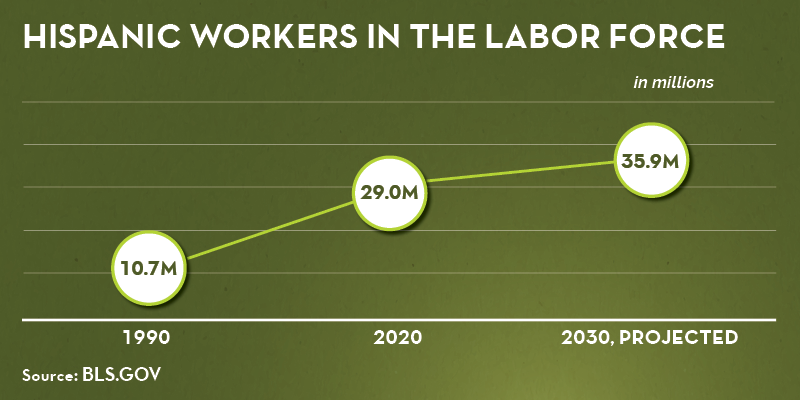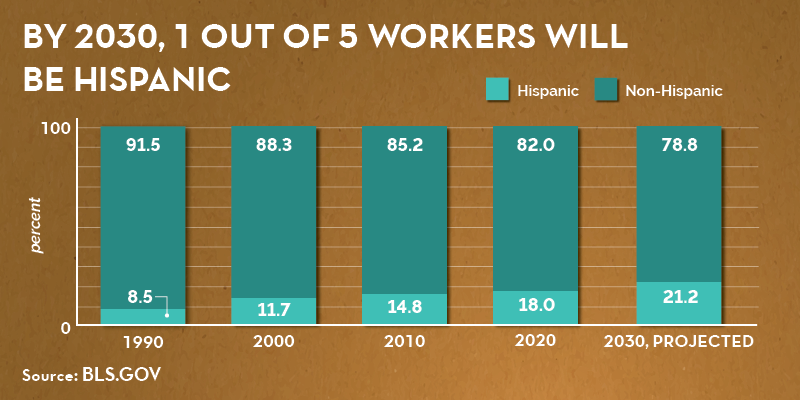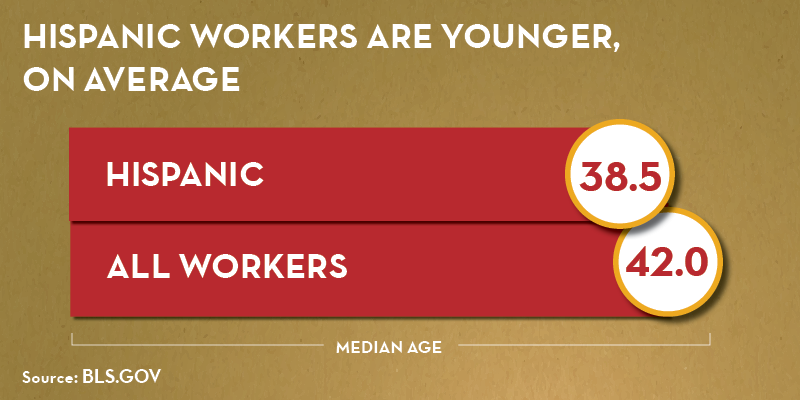The number of Hispanic workers contributing to our economy is growing steadily. The latest employment projections for 2020-2030 show substantial growth as well as higher labor force participation rates. Here are five facts to know:
29 million
The number of Hispanic workers in the labor force has grown from 10.7 million in 1990 to 29.0 million in 2020 today, and is projected to reach 35.9 million in 2030.

78%
Hispanics are projected to account for 78% of net new workers between 2020 and 2030. The U.S. labor force growth rate has slowed over the past couple of decades – and what growth has occurred is largely due to the increasing number of Hispanic workers.
Non-Hispanic growth was negligible over the past 10 years, at just 0.5%. With Hispanic workers’ growth factored in, the nation’s overall labor force growth rate clocked in at 4.5%.

1 out of 5
As a share of the overall labor force, the gap between Hispanics and non-Hispanics is still large but shrinking. The Hispanic proportion of the workforce has increased from 8.5% in 1990 to 18.0% in 2020. In 2030, the Bureau of Labor Statistics projects Hispanics to account for 1 out of every 5 workers in the labor force, at 21.2%.

38.5 years
The Hispanic labor force participation rate is higher than non-Hispanics because they tend to be younger and in the prime age working group, 25-54 years old. The median age of Hispanics in the labor force is 38.5 compared with 42.0 for the entire population. (See table 3.4.)

43%
The sector with the highest concentration of Hispanic workers is farming, fishing and forestry at 43.0%. In second place is building and grounds cleaning and maintenance, at 37.9%; followed by construction and extraction at 35.7%; food preparation and serving at 27.3%; and transportation and material moving at 23.9%. While Hispanics remain overrepresented in service occupations, they now make up 10.7% of workers in management jobs, up from 5.2% in 2000.

Explore more data on employment projections and labor force demographics at bls.gov, and follow us on Twitter for the latest stats at @BLS_gov.
Kevin Dubina is an economist within the Employment Projections program at the Bureau of Labor Statistics.

 U.S. Department of Labor Blog
U.S. Department of Labor Blog

